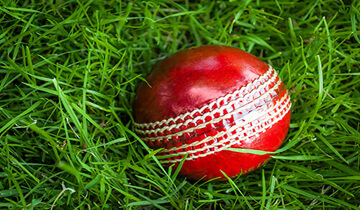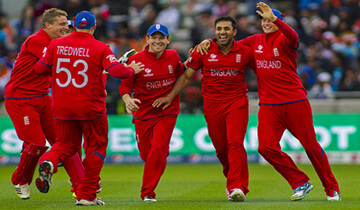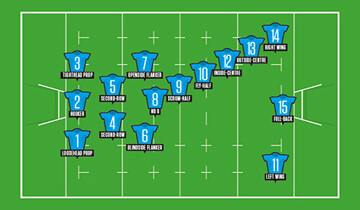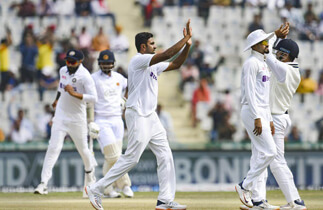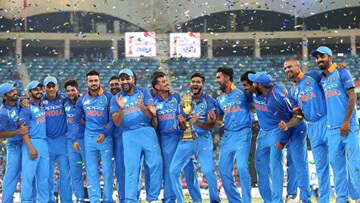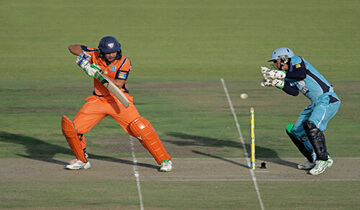Cricket is one of the most popular sports in the world, especially in Commonwealth countries. It is a bat-and-ball team sport that is unique in many ways compared to other team sports.
Basic Rules
Cricket is played between two teams of 11 players each on a large, oval-shaped field. The aim is to score more runs than the opposition. Runs are scored by hitting the ball with a wooden bat and then running between two sets of small wooden posts called wickets. There are several different formats of cricket that have different rules regarding number of overs, fielding restrictions etc. The test match format is the oldest and most prestigious version of the game.
Popularity
Cricket’s immense popularity in Commonwealth nations like India, Pakistan, Australia, England and the Caribbean islands can be attributed to the spread of the British Empire in the 19th and 20th centuries. Fans are very passionate about cricket and the rivalries between teams like England and Australia are world-famous. The One Day International and Twenty20 formats have made cricket more fast-paced and accessible, leading to its growing popularity.
Cricket Pitch and Field
Pitch Length
The length of the cricket pitch is specified as 22 yards, but the size and shape of the ground is not defined, unlike in other sports. Cricket grounds can be oval, circular or rectangular. The 22 yard length allows for stable bounce and movement off the pitch for the bowlers. The pitch itself consists of closely mown grass on a hard surface of clay and sand. Along the center of the pitch are three parallel strips referred to as creases - the bowling crease, popping crease and return crease. These help delineate the batter’s area and the bowler’s area.
Ground Boundaries
The boundaries at different grounds vary greatly, affecting how far a batsman needs to hit to score a six. For example, the Melbourne Cricket Ground boundary is much further than at Feroz Shah Kotla stadium in Delhi. The MCG can have a boundary over 90 meters long, while Feroz Shah Kotla may be 60 meters or less. This allows for more sixes to be hit at Kotla.
Other factors like altitude and size can also impact how far the ball travels. The large square boundaries at Eden Gardens in Kolkata are over 80 meters, very far for a six. Grounds nestled in higher altitude locations like The Wanderers in Johannesburg can also see longer sixes thanks to the thinner air allowing the ball to travel further.
So while the pitch itself remains a standard 22 yards, cricket grounds around the world can vary greatly in their size and shape. This forces batters to strategize differently when playing at various venues. A par score at a small ground with short boundaries will likely be very different than at a large ground where it’s harder to clear the rope.
Game Length
Test cricket matches can last up to 5 days and still end in a draw. No other major team sport takes even half that length of time to complete.
Test cricket is unique among popular team sports in just how long a single match can potentially last. While most team sports like football, basketball, or baseball have a predetermined length of around 2-3 hours, test cricket matches are scheduled for up to 5 days of play. And even after 5 full days, a test match can still end in a draw if neither team has won by the end of the allotted time.
No other major team sport comes close to potentially lasting that long. Even baseball, which doesn’t have a predetermined final buzzer like basketball or football, would rarely go over 3-4 hours for a full 9 inning game. Football and basketball games are even more constrained in the 2-3 hour range.
So at up to 5 days, cricket is truly an outlier when it comes to game length in the sports world. The fact that matches can also end ambiguously in a draw after that much time is even more unusual among modern sports. No matter the score, if the 5 days are up, the game is over.
Even limited overs cricket takes significantly longer than comparable sports like baseball.
While test match cricket stands out for extraordinarily long game times, even shorter forms of limited overs cricket have longer game lengths than similar sports. A one-day international in cricket lasts around 8 hours from start to finish. Major League Baseball games, which have similarities in terms of a batting and fielding team alternating, only take 3-4 hours typically.
Cricket is well-known for its drawn out pace of play. Even when condensed into limited overs formats, cricket moves at a more leisurely speed than comparable sports. There are simply more breaks in action between deliveries and overs compared to the pace of pitching in baseball. That allows for a more social atmosphere at cricket matches but also extends the length of play.
So whether it’s multi-day test matches or one-day internationals, cricket is structured in a way that creates significantly longer game times than other team sports. The elongated pace of Cricket sets it apart in the sports world.
Equipment
Cricket equipment
Cricket equipment like the bat and ball are still handmade from natural materials like wood, leather and cork. The traditional cricket bat is made from English willow wood and the cricket ball is made with a cork core wound with string and covered with red leather. Using these natural materials ensures the traditional character of the game is maintained. The manufacturing process for cricket bats and balls has remained relatively unchanged for over a century. Skilled craftspeople are still relied upon to produce high quality equipment.
Other sports like tennis, golf, hockey and baseball have evolved to use more industrial and synthetic materials for their equipment. Tennis racquets are made from composites like carbon fiber, golf clubs use titanium and graphite, hockey sticks use composites and aluminum alloys, and baseball bats now incorporate metals like aluminum or composite materials. The shift towards manufactured and engineered materials in these sports allows for precise equipment properties like weight, strength and flex.
Protective gear
However, protective gear in cricket has evolved to use more modern materials like metal, fibreglass and plastics. The traditional cane pads used by batsmen have been replaced by pads made from metal, plastic and foam padding enclosed in vinyl. Batsmen and close fielders now often wear helmets made from metal and fibreglass for protection from high speed balls. Wicketkeepers wear padded gloves reinforced with plastic and metal. So while the bats and balls remain traditional, cricketing attire and protective gear utilise modern engineered materials for safety and performance.
Origins and Culture
Cricket’s origins from rural England influenced the slower rhythms of the game. Its evolution was not driven by industrial time-keeping like other modern sports.
Cricket originated in rural areas of England in the 16th century. Unlike many modern sports that developed in urban industrial settings, cricket retains the slower, agrarian rhythms of its pastoral roots. The long form of the game, test cricket, can stretch on for up to 5 days, harkening back to its origins when village teams would play over multiple days when time mattered less. Even the shorter versions of cricket have a more leisurely pace compared to many other sports. The lack of a game clock and the breaks for tea reflect cricket’s rural English origins when the rhythms of industrialization had not taken hold. As a modern global sport, cricket still retains echoes of its pastoral heritage in the pacing and traditions of the game.
The cultural legacy and deep-rooted tradition of cricket in major playing countries also sets it apart from some other global sports.
In countries like India, Pakistan, Australia, England and the West Indies, cricket has a cultural significance that goes far beyond just a sporting contest. Cricket is tied up with national identity and post-colonial struggles in these former British colonies. The long-running cricketing rivalries between these nations are infused with deeper social and political meanings. Local, regional and national cricketing heroes take on an importance that transcends their sporting achievements. The deep social and cultural roots of cricket in these countries give it a special status compared to some more recently invented global sports that lack the same cultural legacy and traditions. For fans from these nations, cricket is more than just a game, it is an integral part of their shared culture and history.
Conclusion
Cricket is a unique sport that stands apart from other team games in several notable ways. The immense length of test matches, lasting up to 5 days, is unparalleled in the sports world. Even limited overs cricket takes significantly longer than comparable sports. The traditional equipment of cricket, especially the handmade bats and balls, gives the game a distinctive character. While protective gear has modernized, the bats and balls retain their artisanal crafting. Culturally, cricket holds special meaning in former British colonies, where it is deeply entwined with national identity and history. The rhythms of cricket also reflect its agrarian English origins rather than industrial time-keeping. Ultimately, with its elongated matches, handcrafted equipment, postcolonial culture, and rural roots, cricket has a distinctive identity that makes it truly unique among popular world sports. Both traditionalists and innovators continue to shape cricket’s evolution as a global sport that holds onto its heritage while appealing to new fans worldwide.


































